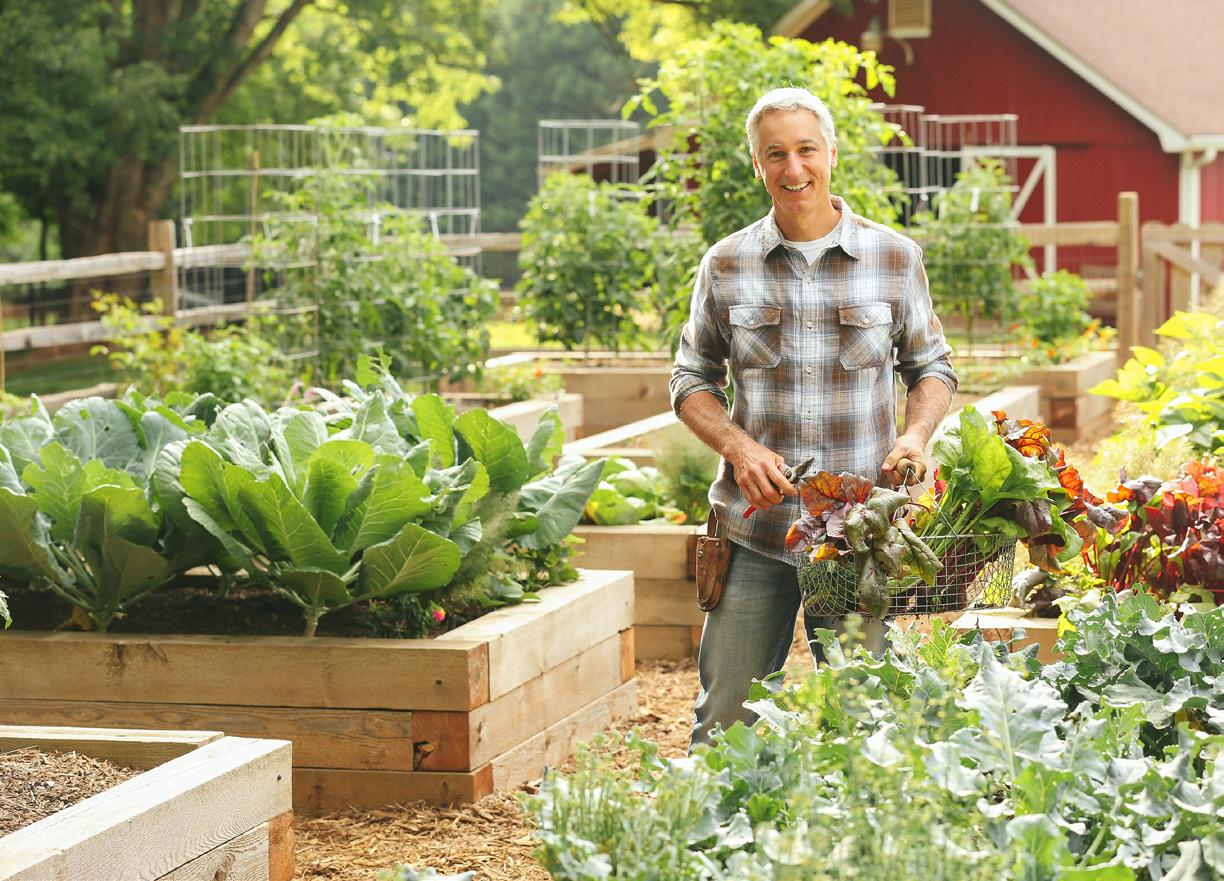
2 minute read
Gardening Your Way to Better Health
Whether you love digging in the dirt or simply enjoy strolling through a woodland garden, connecting with nature can work wonders in your daily life.
“From improving your physical health to taking a break from the stresses of life, getting back to Mother Earth brims with benefits,” says Joe Lamp’l, national television host and creator of joegardener.com. “People who garden are generally more physically active, plus many gardeners I know seem to just be happier and more centered. Maybe it’s because they are so connected to nature.”
Advertisement
From growing houseplants to creating food gardens for family and friends, people who garden seem to find their own niches. Some like to putter with potted plants; others go all out with home greenhouses, large food plots with raised beds, or focusing on collections of similar plants, such as hydrangeas, hellebores, or ferns.

Green and Growing
Lamp’l cites an article from Colorado State University’s Cooperative Extension Master Garden Program’s “Benefits of Gardening.” It says families who grow their own vegetables naturally eat more fruits and vegetables. Plus, gardening provides exercise, stress reduction, and relaxation.
“There’s just something in the soil that has a physiological effect on mental well-being,” Lamp’l says. “For me, it’s about just smelling the earth and the scents of the plants, plus seeing the results of my labors as the plants grow and mature.”
A Sense of Community
The popularity of community gardens yields more than fun food crops to share. It’s a chance for people to come together for a common purpose, make new friends, and improve their environs.
Lamp’l tells of the creation of a neighborhood garden, a one-day project that brought together neighbors and businesspeople of all ages and walks of life.
“When the day began, there was just a large flat area and people willing to work together,” he says. “By the end of the day, there were raised beds filled with seedlings, and dozens of people who were no longer strangers to each other. They had created a huge garden where nothing had existed when the day started.
“People were tired, but no one seemed to notice as they sat back and enjoyed the results of their cooperation.
And it opened the door for them to continue the personal connections created by shared accomplishment.”

Houseplants for Health and Wellness
Surrounding yourself with thriving living plants has many benefits. Houseplants can improve your indoor environment by helping eliminate indoor air pollutants caused by paints, solvents, and building materials. A report from the University of Georgia’s Department of Horticulture showed that more than two dozen houseplants can remove harmful volatile organic compounds from the air, those that have been known to cause asthma and respiratory ailments. Purple waffle plant, English ivy, variegated wax plant, and asparagus ferns are among the most effective.
“Introducing common ornamental plants into indoor spaces is not only good for the environment, but they also create a way to connect with nature,” Lamp’l says. “A home that features living plants just seems to be more alive and welcoming.”
Bring beauty indoors by growing African violets, begonias, orchids – phalaenopsis are the easiest to rebloom – and holiday favorites such as amaryllis, paperwhite narcissus, and Christmas cactus.

